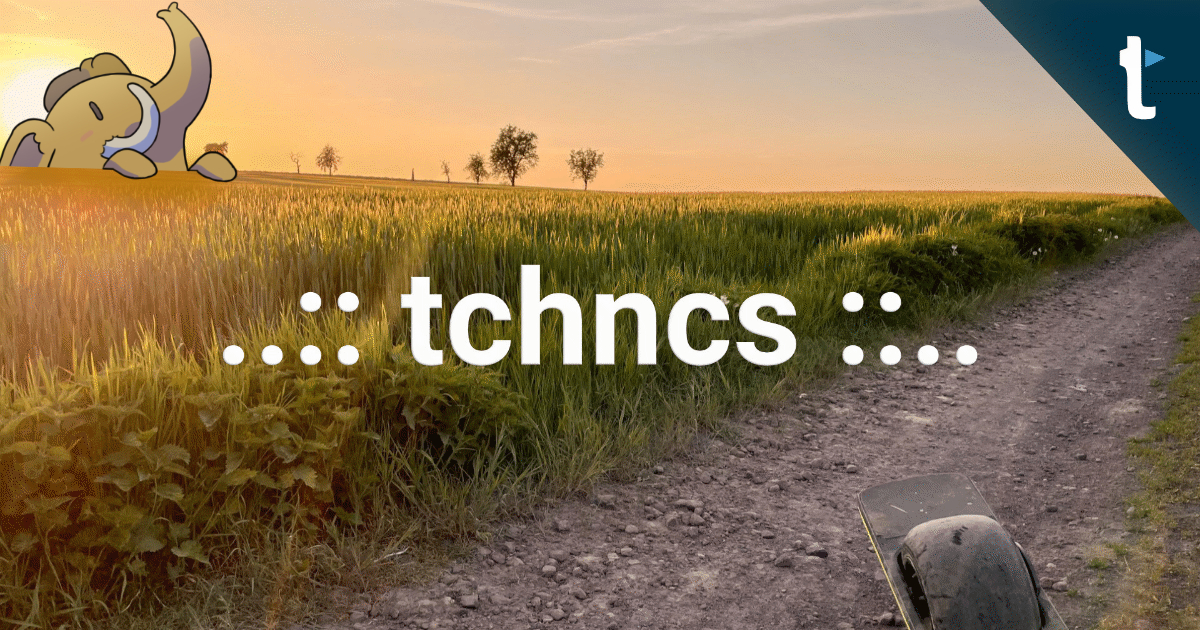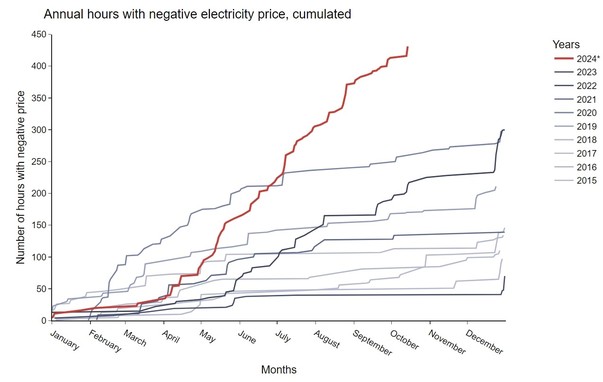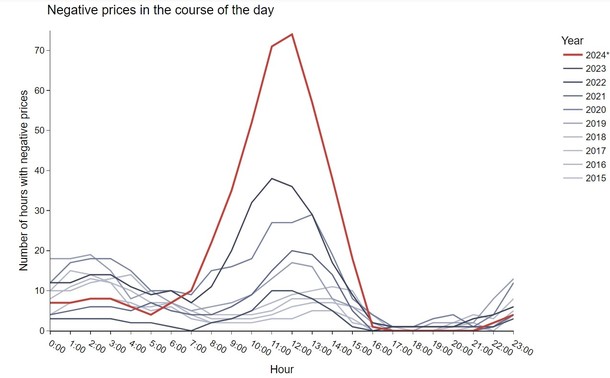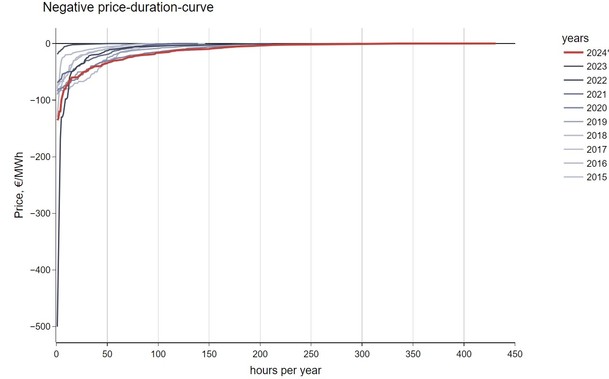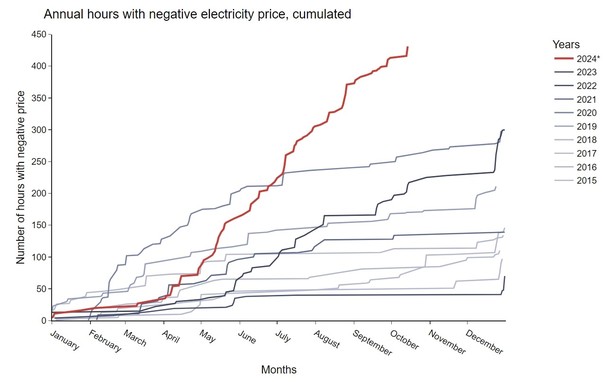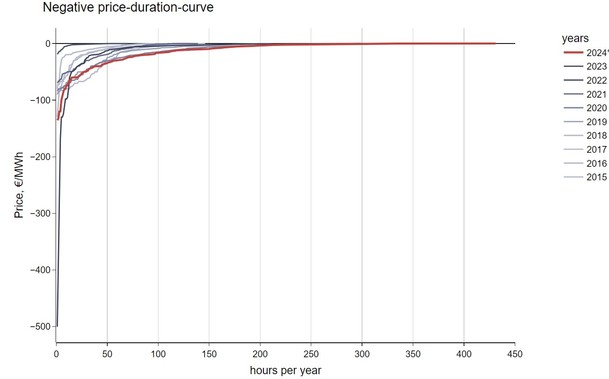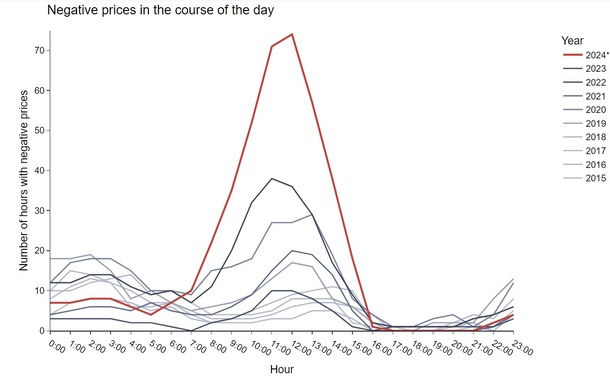Recent searches
Search options
1/ Negative electricity prices There has been a lot of talk about them in Germany recently. But how often do they actually occur and what are the trends?
To make the debate more objective, we at #DIW Berlin have put some data together for you. You can now find regularly updated charts on the frequency and severity of hours with negative prices in the German wholesale electricity market on the #OpenEnergyTracker: https://openenergytracker.org/en/docs/germany/prices/#negative-prices
Mini below
2/ The most important points:
Since 2015, there have been an increasing number of hours with negative electricity market prices - with an interruption in 2021 and 2022 due to the extremely high electricity price level in those years.
There have never been as many negative prices as in 2024.
Negative prices mainly occur in the summer months - and over the holidays at the end of December.
3/ The vast majority of negative prices are relatively weakly negative. Extreme price levels of -€100/MWh have only occurred in three years so far, and even then in less than 10 hours each year.
4/ Negative prices have recently occurred more frequently at midday, when feed-in from inflexible PV systems was particularly high.
5/ So negative electricity market prices are still relatively rare. But the trend is not good and we should take care of it. Negative prices occur when the supply of electricity exceeds demand. Reasons for this include inflexibly operated conventional or renewable electricity generation. In the case of subsidized renewables, there can be economic incentives to produce electricity even in hours with negative prices - and sometimes there is no technical possibility of switching off (building PV).
6/ The trend indicates that flexibility in the electricity sector has recently not kept pace with the expansion of wind and solar PV in Germany. It is now important to remove barriers that hamper power sector flexibility - both on the generation and demand side. We should stop slowing down the expansion of large battery storage systems - and use the storage systems we have in a more system-oriented way - for example, PV storage used by prosumers.
7/ Kudos: Our data analysis was created in the #Kopernikus research project #Ariadne, supported by @bmbf_bund. Many thanks to my great #DIW colleagues Felix Schmidt and Nicolas Eichner Feedback welcome!
@wpschill a practical approach: heat up public swimming pools with excess energy. So the public could actually get paid for running those pools.

